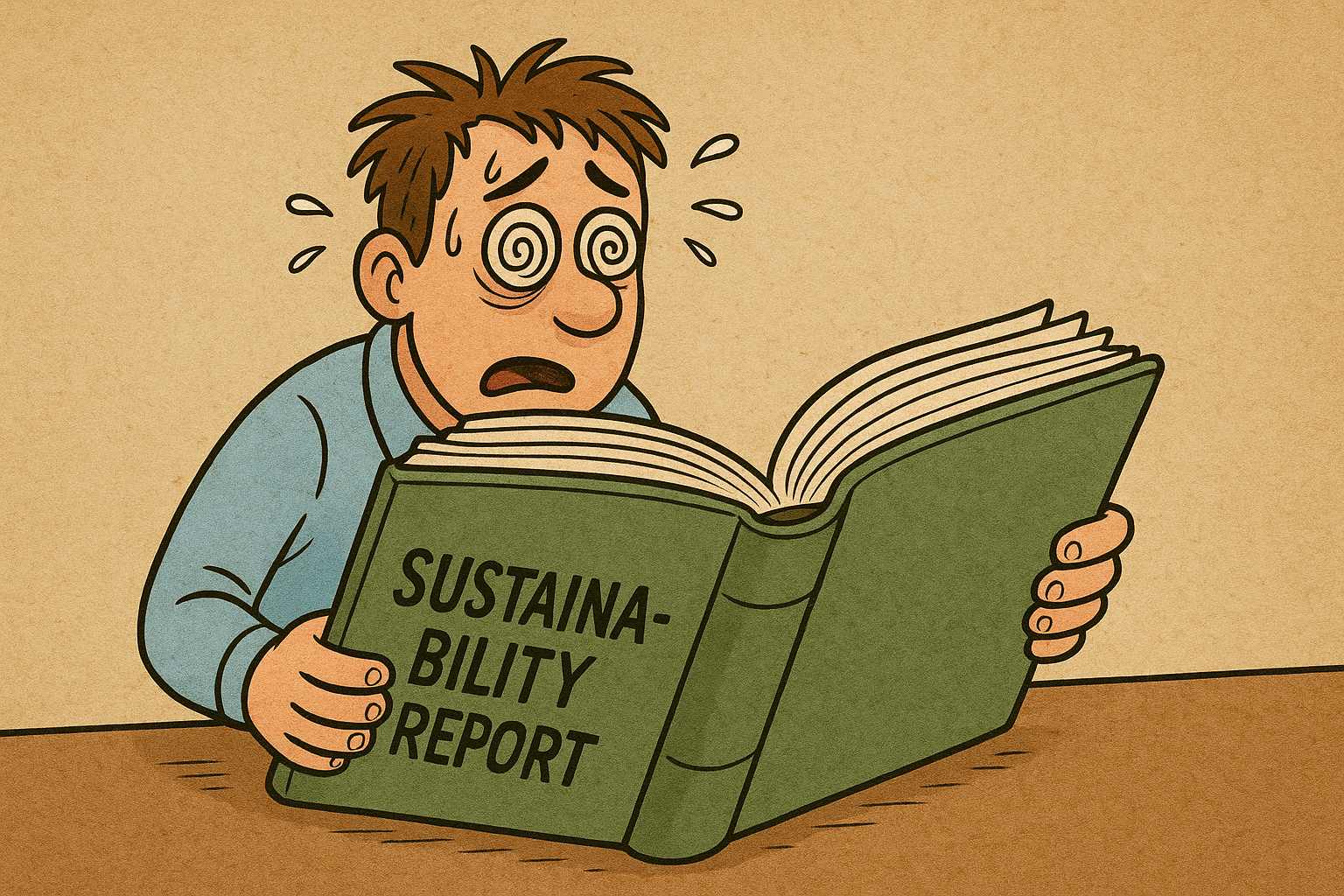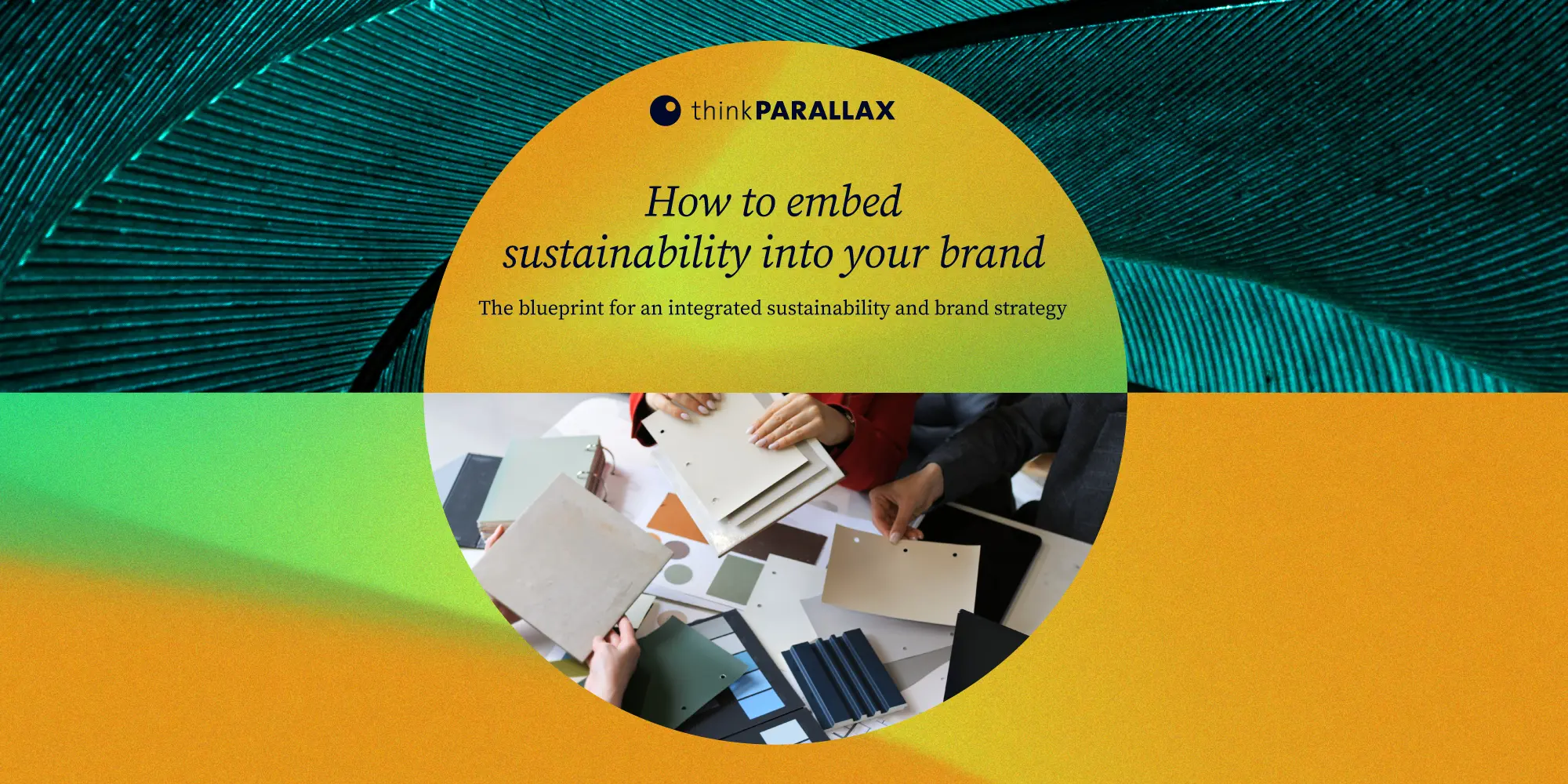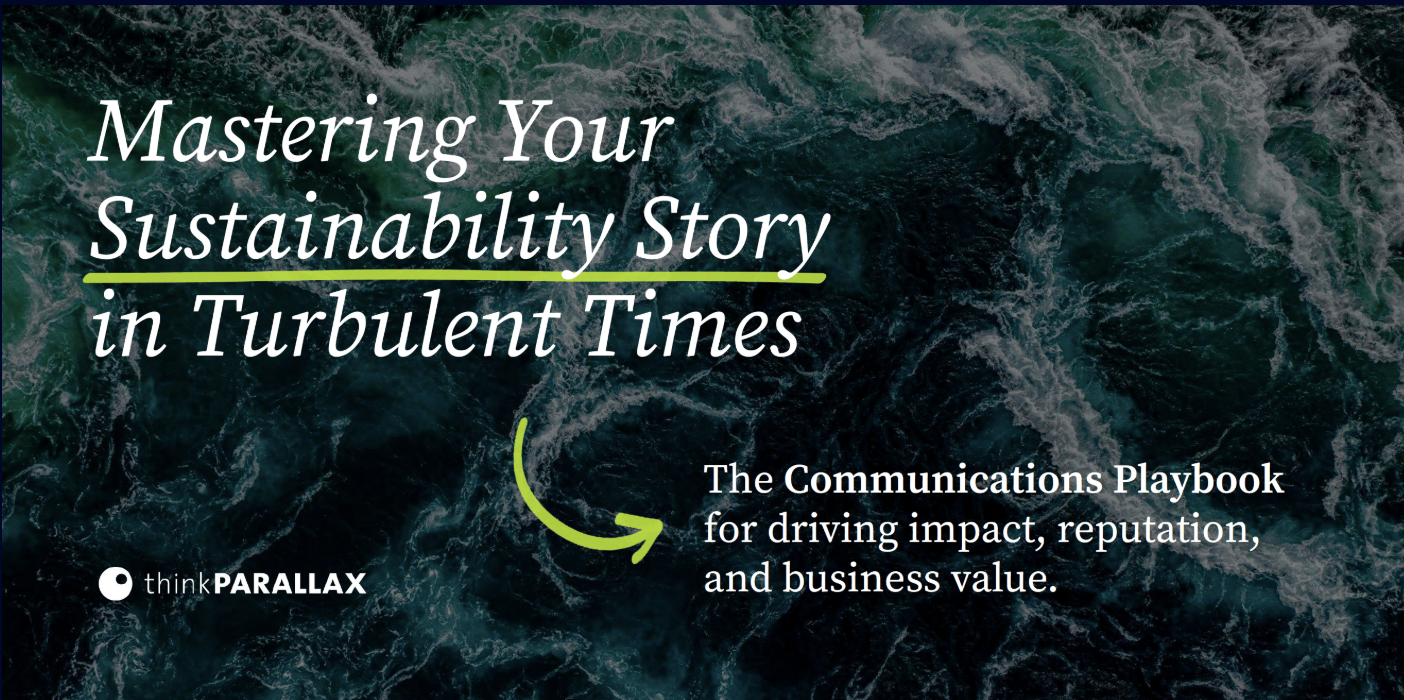For years, the formula has been straightforward: combine hard data with compelling stories in one comprehensive sustainability report that answers every question and meets the needs of the relatively small, diverse audience seeking this information.
Several significant shifts are converging to challenge this established model. First, as corporate sustainability has matured, the level of analytical rigor and disclosure depth has increased commensurately.
Read more: The report is not the work — it’s the story of the work.
Meanwhile, the audience for sustainability information has expanded and specialized. Investors need detailed climate risk data and material impact analysis. Customers want product-specific sustainability attributes or supply chain transparency. Employees seek evidence of organizational purpose and meaningful progress. Regulators require standardized, comparable disclosures.
The technical precision investors or regulators demand differs substantially from the mission-driven narratives that engage employees or customers.
Trying to serve everyone through one report runs the risk of not serving anyone particularly well.
In addition to expanding stakeholder needs, evolving regulatory frameworks increasingly emphasize materiality and discourage non-material information in formal sustainability reports. This leaves organizations in a bind: many of the engaging stories that build employee pride and customer loyalty suddenly have no place in reports that must focus strictly on material business impacts.
Combined with the urgent pressure to drive environmental and social progress on issues that need action, these dynamics have created a strategic inflection point. The traditional comprehensive report approach might not work anymore for many companies.
As an agency that helps companies create these reports, conventional wisdom says we should be telling you that everyone needs one, and it needs to be big, elaborate, and expensive enough to make your CFO weep.
But here’s the truth: that isn’t what every company actually needs.
Let’s be clear: effective reporting is essential to progress, and the ideal approach varies greatly based on industry, stakeholders, maturity, brand, and business.
For some companies a streamlined, professional, minimally designed, disclosure-focused PDF can get the job done. And resources saved can be devoted to driving progress and communicating more effectively to your non-investor audiences.
In our ideal world, companies would invest less in reporting and more on making tangible impact: developing a net zero strategy that isn’t just wishful thinking, conducting climate risk assessments that inform real decisions, building community programs that create measurable change, or engaging your workforce in ways that actually reduce resource consumption.
Before you slash your reporting budget, understand that some companies genuinely need robust, comprehensive sustainability reports.
When investing heavily in reports actually makes sense
- Highly regulated industries. For massive, global businesses in industries where compliance isn’t optional and regulators actually read these things, invest accordingly. For example, Merck.
- Large companies whose business models are intrinsically tied to environmental and social impact. If sustainability isn’t just a nice-to-have but fundamental to how you make money, then yes, you need expansive disclosures and data, and robust reporting on programs and progress. For example, WM.
- Companies where sustainability is core to brand identity. If your customers choose you because of your environmental and social commitments, your reporting better reflect that authenticity. For example, IKEA.
- Companies with complex, global supply chains. When your impact spans continents and industries, complexity in reporting often mirrors complexity in reality. For example, Cargill.
For these companies, producing high-quality, verifiable, year-over-year comparable data requires significant human capital, robust systems, and substantial investment.
The strategic pivot: Streamlining to amplify impact
But if you don’t fall squarely into those categories, this might be the perfect moment to think more critically about how reporting efforts can be streamlined so you can redirect those dollars toward initiatives that create measurable change.
If it makes sense for your company, consider evolving your sustainability report from a giant, photo-filled, book-length PDF into a streamlined, minimally designed, data-focused document that prioritizes disclosure and transparency.
Then use the money you save to actually move the needle. For example, we’ve seen clients redirect resources toward meaningful action like:
- Developing, refining, and/or implementing an ambitious Climate Strategy: Create a Net Zero plan that goes beyond aspirational statements. Invest time in upleveling leadership around climate risks and opportunities, ultimately helping to secure more significant operational investments.
- Launching a Strategic Community Impact Initiative: For example, launch a green jobs education program in local high schools and colleges aimed at building the next generation of talent (and mitigating the risks associated with an aging workforce).
- Launching a Supplier Engagement Initiative: Target suppliers to collaborate on meaningful Scope 3 reductions.
- Conducting a Lifecycle Assessment on core products: Identify opportunities to innovate or re-design products to improve circularity and/or reduced carbon impact.
- Engaging your employees to drive performance: For example, launch an employee innovation initiative and campaign aimed at uncovering fresh ways to solve roadblocks to reaching your sustainability targets, while simultaneously increasing employee engagement.
- Conducting an ESRS Gap Assessment: Get ahead of compliance requirements before scrambling becomes your full-time job.
- Creating Customer-focused Sustainability Communications: Leverage the substance of your streamlined report to create a customer-focused digital storytelling platform or creative campaign that will build knowledge and/or drive sales.
The bottom line
The most transformative companies we work with understand that sometimes the best report is the one that frees up resources to do work that actually makes an impact.
Your stakeholders don’t need another beautiful document. They need evidence that you’re serious about the challenges facing your business. Sometimes that evidence comes in the form of comprehensive reporting. Often, it comes in the form of meaningful action supported by clear communication targeted to your unique stakeholders.






